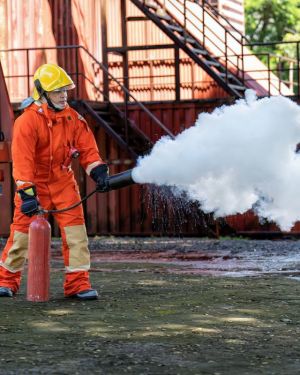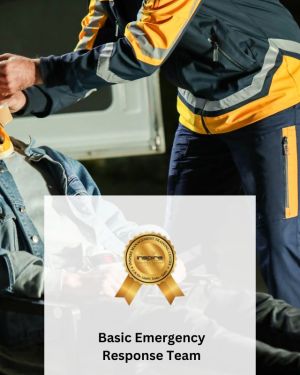Course Objectives
o Understand the properties and hazards of H2S.
o Recognize the importance of and demonstrate the correct use of detection equipment.
o Understand and demonstrate the correct use of respiratory protective equipment (RPE).
o Perform emergency response actions, including escape and rescue techniques.
Course Content
Introduction to H2S
o Properties of H2S: Colorless, flammable, extremely hazardous gas with the characteristic odor of rotten eggs.
o Sources of H2S: Natural occurrences, industrial processes, etc.
o Health Hazards: Toxicity, exposure limits, symptoms of exposure, and first aid measures.
Detection of H2S
o Detection Methods: Fixed and portable gas detection systems.
o Monitoring Systems: Continuous monitoring and alarm systems.
o Calibration and Maintenance: Ensuring equipment is functioning correctly.
Use of Breathing Apparatus (BA)
o Types of Breathing Apparatus: Self-contained breathing apparatus (SCBA) and airline breathing apparatus.
o Donning and Doffing: Correct procedures for putting on and removing the BA.
o Pre-Use Checks: Inspecting the BA before use.
o Usage: Practical exercises in using the BA under simulated conditions.
o Maintenance and Storage: Proper care and storage of the BA.
Emergency Response
o Emergency Procedures: Actions to take in the event of an H2S release.
o Evacuation Techniques: Safe evacuation procedures and routes.
o Rescue Operations: Basic rescue techniques and the use of rescue equipment.
o First Aid: Basic first aid measures for H2S exposure.
Practical Exercises
o Gas Detection: Hands-on training with detection equipment.
o BA Drills: Practical training in the use of breathing apparatus, including donning, doffing, and simulated emergency scenarios.
o Evacuation and Rescue: Simulated emergency response drills.
Assessment
o Written Test: To assess understanding of the theoretical aspects of the course.
o Practical Assessment: To assess competence in using detection equipment and breathing apparatus, and performing emergency response actions.
Certification
Upon successful completion of the course, participants will receive an OPITO approved certificate, indicating their ability to safely work in environments where H2S is present and their competence in using breathing apparatus.
Additional Notes
o Prerequisites: Participants should be medically fit to wear breathing apparatus.
o Refreshers: Regular refresher courses are recommended to maintain certification and ensure ongoing competence.
For the most accurate and specific information, it’s best to refer to the course details provided by the training center offering the OPITO H2S/BA course, as there can be variations in course delivery and content.








